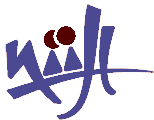Textile Design program
Duration : 3 Years
Centers : Mohali
Total Seats :60 at Mohali
India has a strong textile design and manufacturing base whether it is traditional, handloom power-loom organized mill sector. Textile being one of India's core segments, is now gaining fervor both in the export and the domestic market. The changing taste of consumer, aided by higher disposable incomes, has spun a new market for these products universally.
The TD program is therefore geared to cater to the growing market demand for TEXTILE PROFESSIONALS for innovative design solutions, creative woven structures, blends and colors. It also aims to nurture the design skills and develop the 'DESIGN' attitude of the students.
Through discovering the vast range of applications for textiles, the students are encouraged to realize a target market for their designs and a strong emphasis is placed on the visual research, development of ideas and experimentation in this creative process. Craft Documentation, Live Projects and Internship with various design companies and rural segment industry will address professionalism and employability by assisting students in considering their chosen career path.
The balance that is created between innovations and creativity on one hand and the strong context of textile industry on the other hand, encourages the students to graduate with an awareness of not only the opportunities but also the challenges ahead, whether they undertake further study or begin their own textile practice in this huge and complex industry.
The curriculum
The main focus of the course is on the textile design for fashion, interiors and related field enabling a cross- fertilization of ideas and possible collaboration by knits, weaves, CAD and CAM. It also makes students appreciate the multi-disciplinary nature of design. Planning skills are developed through analysis of fashion trends, along with study of marketing and global market analysis.
The future textile designer thus learns to develop collections according to the seasons, through the definition materials, textile structures, decorative motifs, color range and possible finishing details.
Phase I
In the first year, the students are introduced to the Fundamentals of Design, they develop their sense of color, light, shape, texture and form. It also includes study and exploration of the properties of fiber, yarns and dyes. Students are also introduced to woven, knitted, printed and embroidered textiles.
Phase II: Development of Design Skills
In this phase, main emphasis is on concept development in dialogue with material and technique. In-depth knowledge of Weaving Skills, Chemical Processing, Dyeing, Printing, Fashion Studies, Traditional Embroideries and Principles of Marketing and Management are integral part of Textile Design. Knowledge of computers as a creative design tool for design students is also stressed upon.
Phase III: Development of Design and Creative Projects
During this phase the students with tutorial guidance, negotiate a personal program of study and are responsible for the management of the project from initial concept to final stage. A dissertation is a requirement of the final award in lines with the main study program.
The course encompasses the major areas of specialization within the textile field, including woven and constructed textile, printed textile, as well as knitted and embroidered textiles.
Project Works
The students are encouraged to undertake client based projects. This equips students with the knowledge and practical design experience to channel their creative and individual skills into self-initiated and commercial applications. Students also work with various NGOs, artisans, clusters and undertake Projects and help in Design and Product Development.
Industrial Visits
Field visits to industrial establishments and fairs are a regular feature which enables the students to understand and broaden their knowledge of textiles and textile based products besides learning the actual working of the textile industry.
Workshops
Industrial experts are regularly invited to give special inputs on various areas of textiles from fiber to fabric to design in the form of workshops and lectures. This gives students a platform to interact with these industrial experts and get first hand information on latest developments on design and technology.
Trends Forum
The Institute is invited every year to set up a display of Trends Forecast at Texstyles India Fair organized by India Trade Promotion Organization. The samples developed according to the trends forecast in the Institute, by the students are displayed in the Forum. In the year 2008, NIIFT bagged the 1 prize for best display at Texstyles Fair. Exporters take keen interest in the samples developed and also buy these for further production.
Important features of the curriculum
Craft Documentation
Craft documentation forms an important part of the curriculum of Textile Design course in the second semester. Here the students undertake extensive excursion to study and document the rich and diverse aesthetic heritage of our country. The survey enables the students to interact with the craftsmen in their habitats and get the first hand knowledge of the art and crafts.
Industry Internship
After the fourth semester the students are required to undertake a six weeks industry internship program wherein they work either in the industry or under a well known textile designer. The main objective of this exercise is to enable the students to get an insight into the real working environment.
Diploma Project
The mainstay of the Textile Design Program is its primary link with the industry through the diploma project of the final semester students. These students work with an industrial client for a period of nearly 5 months. This results in the development of individual collections and exhibition of Design work in a gallery setting.
Careers
This program equips the students to pursue careers in Textile Mills, Export Houses, Home Textile Sector, Handloom Sector, Power loom sector, with Fashion Designers, Design Studios, or one can operate as Freelance Designer, Entrepreneurs, etc.

